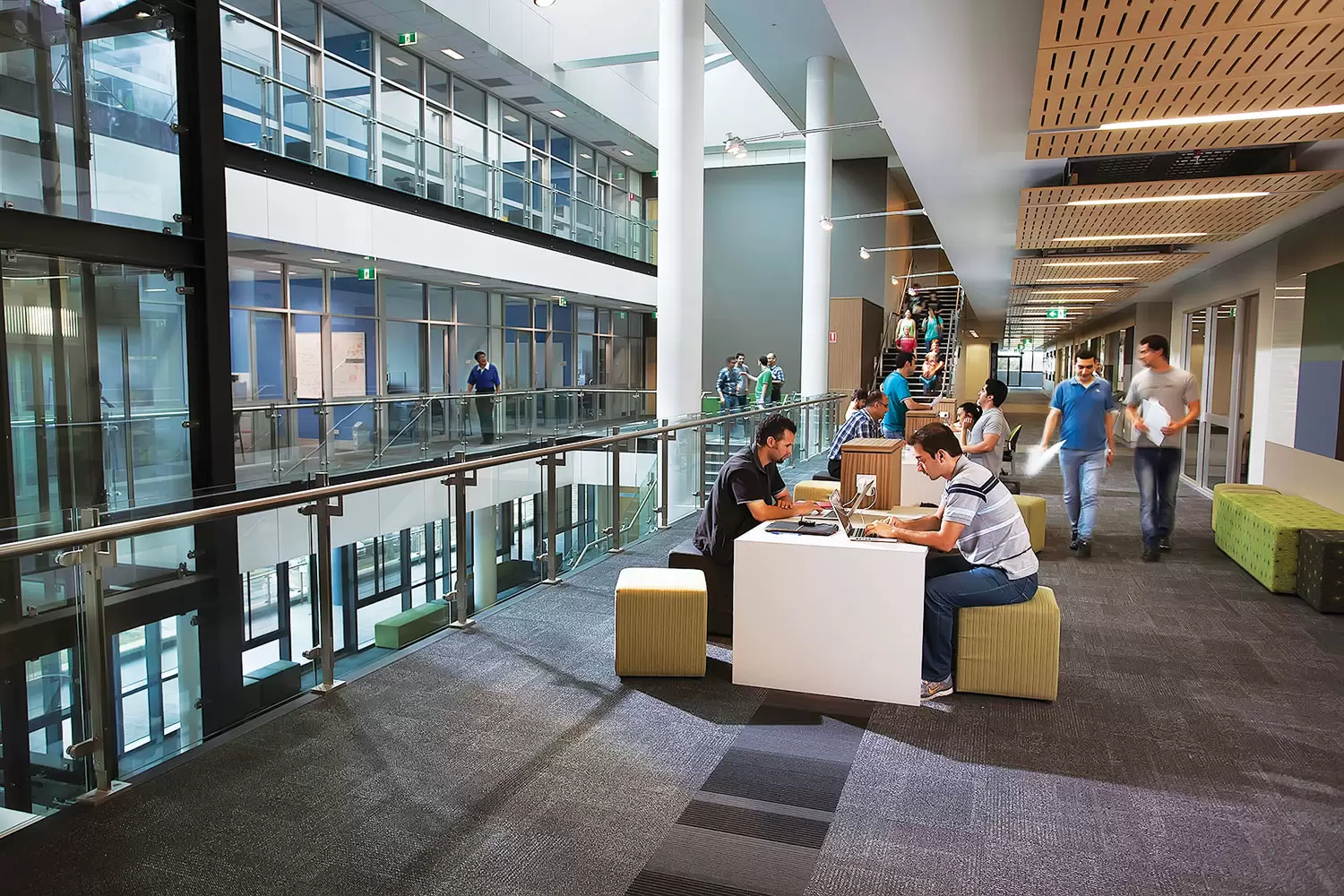According to the Federal Department of Environment and Energy, heating, ventilation and air conditioning (HVAC) is typically responsible for “70 per cent of base building (i.e. landlord) consumption” when it comes to energy.
“There’s a lot of focus on reducing energy consumption, reducing carbon emissions, within the commercial space,” energy efficiency specialist Rod Kington, National Sustainability Manager at Grosvenor Engineering Group, told create.
He added that commercial building energy efficiency in Australia has improved dramatically over the last decade.
Grosvenor manages more than 685,000 assets at 16,800 sites, cumulatively worth $2.2 billion, so any savings add up.
Kington’s company was part of a recent collaborative project — with researchers from the University of Wollongong’s (UoW) SMART Infrastructure Facility and Enviro Building Services, with New South Wales Government support — to drive a new set of improvements through connectivity and artificial intelligence.

Working with an academic institution presented several advantages, said Kington. One of these was access to people with the freedom to think broadly.
“They have those opportunities to have those bigger thoughts, and investigate stuff that maybe we wouldn’t look into, or we might not know about,” Kington said.
This Building Energy Monitoring Project developed a forecasting tool using data on historical temperature going back several years, HVAC power delivered, outdoor temperature, and solar radiation. It forecasts over a 24-hour period at 15-minute intervals.
The usefulness of this?
“We expect to find that it is more efficient to pump cool night air into a building rather than turning off the system at 6 pm and allowing rooms to heat up due to lack of ventilation,” said lead researcher Dr Rohan Wickramasuriya from UoW prior to the project’s completion.
Another solution developed was a highly accurate people counter. It uses image data captured by a Raspberry Pi camera module, a Raspberry Pi unit, and a deep-learning algorithm, and allows for near-real-time counting of occupants. Images processed are not kept — to protect privacy — but the anonymised data is.
It is an area of interest for commercial building managers, said Kington, and installing passive infrared motion detectors is increasingly popular.
“That sort of technology is good, but it doesn’t tell you how many people are in the space, and that has a huge contribution to the heat load,” he explained.
“It’s nice to know people are there, but it’s great to know how many people are there.”
The new counter has an accuracy of 92 per cent, an improvement on 65 per cent for an existing solution.
A tool to detect abnormalities in rotating HVAC equipment was also developed during the project.
Kington has been at Grosvenor since 2009. He started his career in water conservation before his electrical engineering degree led to a role at consultancy Energetics.
He is excited about the usefulness of the people counter to his and other industries
For example, a fire brigade could arrive at a site with knowledge of how many people are on each floor.
“They’d be able to make decisions on ‘we really need to evacuate level 12; there are 800 people approximately on that floor space’,” Kington said.
“Or just for meeting rooms and smaller spaces you could see utilisation rates and you can see the thermal load in those spaces.”
Full house
Kington sees many possibilities for his people-counting technology.
“How often is space utilised in buildings? How full are they?,” he said.
“If you see buildings, you walk around the city, you’re going, ‘oh that building’s only got 30 per cent occupancy at the moment and it’s 11 o’clock on a Friday morning’.”
That information could lead to further benefits for building owners or managers.
“‘Could I sublease that space to someone else?’ You could get better utilisation. When you get better utilisation you get improved efficiency, reduced carbon emissions, and you get all sorts of follow-on benefits from that,” he said.
This article originally appeared as “Cool rooms” in the September 2019 issue of create magazine.